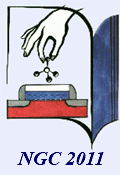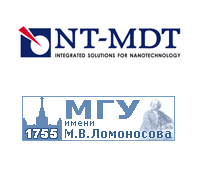
Nano and Giga Challenges
in Electronics, Photonics and Renewable Energy
Symposium and Summer School (Tutorial Lectures)
Moscow - Zelenograd, Russia, September 12-16, 2011


|
Nano and Giga Challenges in Electronics, Photonics and Renewable Energy Symposium and Summer School (Tutorial Lectures) Moscow - Zelenograd, Russia, September 12-16, 2011 |  |
Commentary Stephen Goodnick
The role of nanotechnology in renewable energy technology is rapidly growing in fields such as solar energy conversion and energy storage. One reason of course is that nanotechnology opens the possibility for new materials with tailored electronic properties that do not exist in bulk materials. This flexibility allows for tunable bandgaps for solar collection, or new catalytic materials from for electrochemical conversion. In photovoltaic devices, nanotechnology can help enhance the performance of conventional Si and thin-film technologies by boosting efficiency through increased absorption, or enhancing light collection and management through nanoplasmonic structures. Nanotechnology is also at the core of many so-called third generation photovoltaic concepts for realizing much higher conversion efficiencies, closer to thermodynamics imposed limits, through such ideas as intermediate band solar cells, multiexciton and hot carrier devices. The ultimate goal is to enhance the solar to electrical conversion efficiency while at the same time reducing the cost of processing and manufacture of solar cells to make this technology economically competitive with conventional forms of energy. Arizona State University has a broad variety of nanotechnology and energy related research activities coordinated by several research centers and two umbrella organizations — ASU Lightworks, and the Arizona Initiative for Nanoelectronics (AINE). In particular, Photovoltaics research at ASU is conducted in several groups including the Solar Power Laboratory which is home of the NSF Engineering Research Center (ERC) for Quantum Energy and Sustainable Solar Technologies (QESST), as well as Center for Photonics Innovation, the Flexible Display Center, the Center for Bioenergy and Photosynthesis, and the TÜV Rheinland Photovoltaic Testing Lab. Solar energy conversion research at ASU covers a broad area from biofuel and artificial photosynthesis to semiconductor and organic photovoltaics to testing photovoltaic devices. We also have strong research efforts in fuel cells and battery technology. ASU hosted the 3rd Nano & Giga Forum (NGC2007), which among others, was supported by Canadian Ministry of Foreign Affairs and Trade and attended by several leading Canadian researchers and government officials including John Polani, Nobel Laureate from the University of Toronto, and Alastair Glass, Minister of Research Innovation from Ontario. ASU also partnered with McMaster University in organizing the NGC2009 conference as a joint event with 14th Canadian Semiconductor Technology Conference (CSTC2009). We greatly look forward to our participation in NGC 2011 in Moskow, and for a very successful event.
Interviews with Stephen Goodnick: |
Empowered by Nano & Giga Solutions and NT-MDT
© 2010